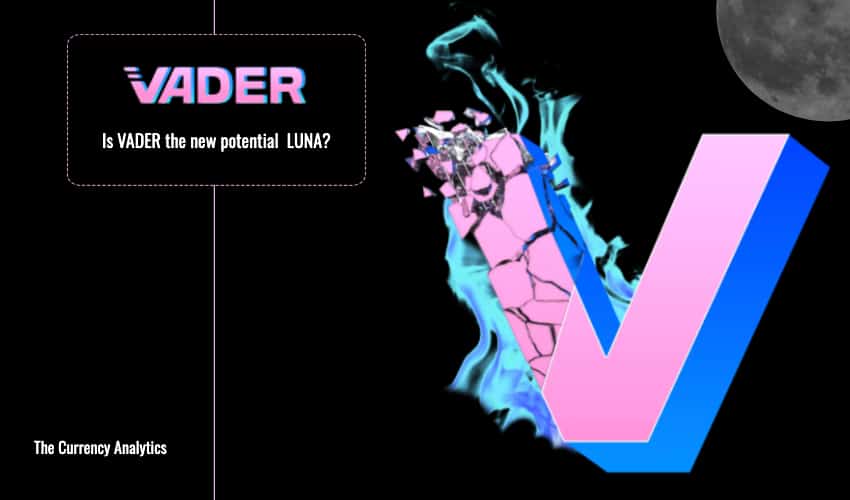
Talk about the latest buzz in the stablecoin space and it’s Vader which is raking up the fair share of the limelight today. VADER can be defined as a cutting-edge liquidity protocol which has combined a hybrid algorithmic-collateralized stablecoin with liquidity pools, improved through synthetic assets. USDV, the stablecoin of the platform, is issued by burning VADER tokens – USDV functions as the settlement asset. On the other hand, VADER liquidity helps to incentivize the guarantee of finance impermanent loss protection which eventually makes VADER pools more conducive to capital. A major reason why Vader is creating so much buzz lately is because of its decentralized infrastructure which is something rare in the stablecoin world. And that draws in the mention of the LUNA token of Terra blockchain which was the first to pioneer DeFi infrastructure in the stablecoin scene. So, that brings us to the crucial question of whether VADER is the next potential LUNA?
Burnt-to-mint mechanism
It has already been discussed that Vader’s USDV stablecoin is issued by burning VADER tokens. Now, this state-of-the-art burnt-to-mint technology was originally introduced by LUNA in the stablecoin world as part of its DeFi architecture. LUNA is Terra’s governance token while UST token is the stablecoin of the network. Just as VADER is burnt to issue USDV in Vader, in Terra, LUNA is burnt to mint UST tokens. Put simply, Vader has adopted the burnt-to-mint mechanism being inspired by Terra.
However, although both Terra and Vader follow a decentralized infrastructure and burnt-to-mint mechanism yet there are differences too.
Difference in collateral backing
There are two major types of collateral backing mechanisms- TDB (Trust Dependent Backing) and UDB (Utility Dependent Backing).
Terra follows the TDB mechanism for UST while Vader follows a hybrid protocol which is a blend of both trust-dependent collateral and utility-dependent collateral (Vader AMM). The cutting-edge hybrid combination empowers USDV with the advanced power of absorbing sudden market shocks, enabling it to switch from TDB to UDB as per changing market conditions. For example, USDV can follow TDB when the market is calm and can change to UDB if the market suddenly turns volatile.
This hybrid collateral backing mechanism is something that is completely exclusive to Vader till date and Terra doesn’t offer that flexibility yet. Bottom line is, if you are evaluating the risk profile of both the platforms, Vader will always have an upper edge as it will be less risky than Terra or LUNA.
Advanced decentralization
Although Terra is a much revered name in the stablecoin space and rightfully so yet Vader sweeps in more points given its more modernized infrastructure. In other words, Vader boasts more advanced decentralization than Terra as USDV is developed on Ethereum and UST isn’t. Yes, there is the glitch of pricey gas fees with Ethereum but look at the bigger picture- Ethereum 2.0 is just round the corner and it has claimed to address the exorbitant gas fee issue upon launch.
So, again, is VADER the next LUNA? To be precise, it would be more appropriate to say that VADER is probably an improvised version of LUNA given its more advanced architecture.
We hope you’ll like this article and if so feel free to send a tip to our writers in Vader To :
Address: 0x3e5F9b09c4b60E47D172ebA06fcca1728E903004 Or any other Cryptos via this link.
Thank You,
The TCAT team.

Get the latest Crypto & Blockchain News in your inbox.